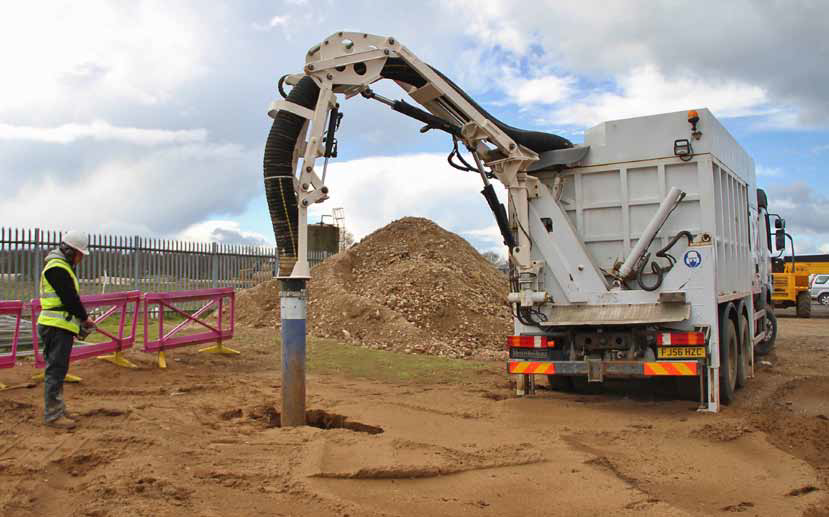The large station wagon from Audi is an exquisite long-distance car. Test of the updated plug-in hybrid variant with a larger battery and longer electrical range.
Beautiful station wagons are called ‘Avant’, which sounds like an old marketing slogan from Audi. While it’s not every station wagon design from Audi that makes me clap my hands, there is something about the talk. An older station wagon from Audi – for example, an 80 Avant or an older A6 Avant – is elegant and characterized by design, where a certain model’s model has not ruined the long-term durability.

The big A6 Avant will also look stylish and elegant in 20 years, I’m sure. This week’s test car is close to being as perfectly composed when it comes to color choices, wheels, and cosmetic details as I can imagine it. The color is called “Firmament Blue”, the wheels are partially polished 19 “in a turbine design, and because this specific A6 Avant runs with S Line equipment, all moldings that would otherwise be in chrome are glossy black. A slightly gloomy expression, but it matches the beautiful red taillights and the artful (and incredibly bright) matrix LED headlights.
The A6 Avant is not new, and I’m too early for the test to coincide with a facelift. The reason it’s in the garage this week is the battery and changes to the plug-in driveline. But also for the reason that I like beautiful station wagons, which I look forward to showing off as symbols that not everything has been lost to SUVs and crossovers.
Recommendation:
The Projecta Battery Charger range is one of the most comprehensive in the market. Safe, Fast performance & affordable.
What happened to the battery and the driveline?
To start a little wider now, the Audi A6 with PHEV driveline is available both as a sedan and station wagon, and they are each sold in two variants. A6 50 TFSI e with a total system output of 299 hp and the test A6 55 TFSI e with a system output of 367 hp.

Common to both variants is that Audi has taken the battery with a capacity of 14.1 kWh and replaced it with a battery that can contain 17.9 kWh. As excellent proof that the battery development is now going really, really fast, the new battery does not take up more space than the old one – the energy density is just greater.
The reduction in luggage capacity compared to an A6 Avant with a diesel engine is, therefore, the same as before; you have to make do with 405-1,535 liters in the PHEV against 565-1,680 liters in a diesel. But it’s primarily the space under the false bottom that Audi has snatched, so the real difference doesn’t feel that big. The bottom is also flat, so you do not, as in the BMW X3 30e, for example, have to lift things over a small and quite annoying edge when you load heavy things.
Audi has also added the option to charge the battery by using the 2-liter petrol engine as a generator. So instead of using a charging cable and your charging box or a charging stand, you force the petrol engine to make power. Extremely uneconomical and something I would never recommend. But it has the advantage that if you come to a city with environmental zones with very strict requirements, where only electric cars are allowed to drive, and you have not charged, then you can still prepare by charging the battery on the go – and then not stay rejected at the city gate.
Is there any difference in driving with the new battery?
This is the first time I try the A6 Avant as PHEV, and it’s the first time I try the powerful variant with 367 hp. You may remember that last year I put the A6 sedan 50 TFSI e up against the BMW 530e. If not, you can find the duel test right here:
With the new battery, the electric range has increased from about 52 km to about 65 km. It is a value that lies at the high end compared to PHEV models over a wide comb. The difficulty of comparing last year’s test car with the small battery with the new test car with the larger battery is the time of year. Last year’s test was in October, when it was 10-12 degrees, while this test is in a summer week with 25 degrees. Batteries love heat and it gives a longer range than when it is cold. So it is only fair to conclude that the battery in the updated A6 provides a usable range, especially in the city and at lower road speeds, which you get a good distance on.
Most sensible, as I see it, is to use the hybrid feature if one is going out of town. Enter the destination in the fine navigation system, after which the Audi will find out for itself where on the route it is smartest and most economical to use the power. And it works, I should greet and say.
367 hp must be noticeable?
Both and. I have the weaker A6 sedan 50 TFSI e fairly clear in mind, and with 299 hp it was no dull toad. Both variants, ie 50 TFSI e and the stronger 55 TFSI e with 367 hp, use the same 2-liter petrol engine with the same performance, which together with the better battery is raised to 265 hp from 252 hp. The electric motor has 143 hp in both models. It is software and when electric motor and gasoline engine each peak.
With plenty of battery power, the A6 Avant 55 TFSI e is a fast station wagon that hits 100 km / h after 5.7 seconds. But it is only 0.6 seconds faster than the 50 with 299 hp. When the current level is at rock bottom, the difference in forces is not noticeable at all. Only when you jock the accelerator to the bottom on a country road or highway does the 55 pose more punch.
But it’s a punch that’s unnecessary. 299 hp is so very well performance for the big car, where comfort, directional stability, and long-distance characteristics so clearly overshadow sporting intentions. Well enough, the A6 Avant is much lower than a large SUV, but you still need to gain at least 2,150 kg (curb weight) through small turns, and the steering is lazy and prefers to drive straight on the motorway.
A significant difference is also that where the 50 variant runs without an S Line package, it is standard on the 55 variant. The S Line is equal to a sports suspension, and the A6 Avant does not need it. That, along with an inch larger wheel than the sedan I tested in 2020, provides fertile ground for minor bumps through the undercarriage. A minor deterioration, but after all a deterioration.


















